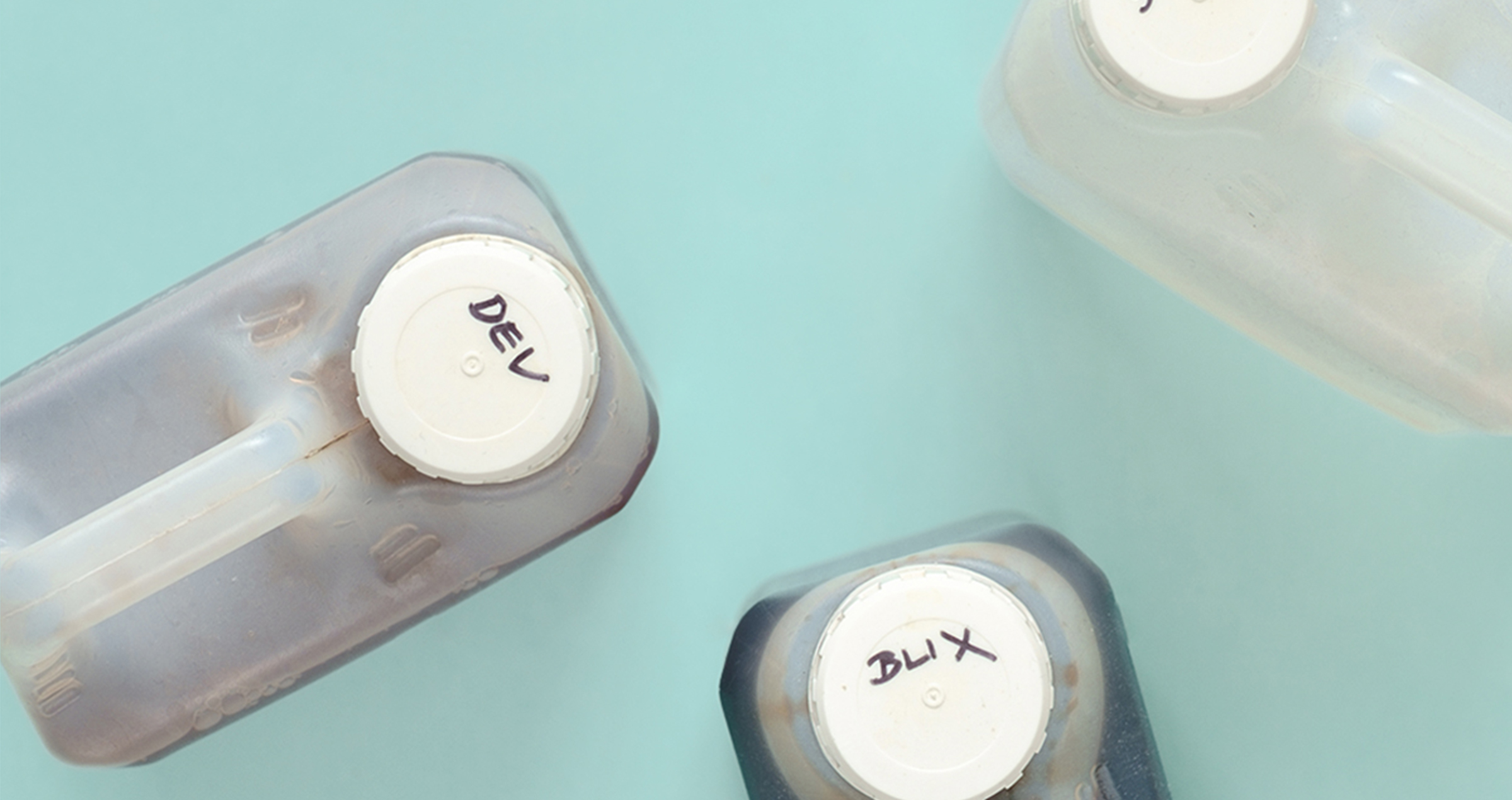How To Dispose Of Film Developing Chemicals
It is important to know how to dispose of film developing chemicals correctly. This guide will explain the options for getting rid of your waste chemistry.
We think it is a great idea to start developing your film is at home. The one downside to this is that you will need to dispose of film developing chemicals when you are done. This can be a daunting prospect for some people, particularly those who are new to film photography but don’t worry there are some simple steps you can follow.
Disposal Of Waste Chemistry
Firstly, you should bottle all your waste chemicals in suitable plastic bottles. Different chemicals should not be mixed and you should keep them in separate containers. Make sure to label them clearly too, as it is important that these liquids can be identified easily.
In all areas of the country, the local authorities should have arrangements in place for handling small quantities of used or unwanted household chemicals. Local Waste and Recycling Centres have designated areas for chemicals to be left. Taking your waste chemicals here will mean they are disposed of in the correct manner. Look into where your nearest Waste and Recycling Centre is and use this facility to get rid of your waste developing chemicals.
If you are lucky, your local authority may have arrangements for collecting waste chemicals. You will need to contact them directly to see if this is a possibility.
Other Disposal Options
In some cases, these disposal options might not be feasible. In that case, manufacturers suggest that small amounts of chemicals can be diluted with water and flushed down the drain. Although you should never put used chemicals into a septic tank as this may cause damage and compromise its effectiveness.
This it is not an ideal solution, but small amounts of developers and stop baths can be disposed of in this way without causing too much harm. Fixer, on the other hand, is not so simple as it has a quantity of silver dissolved into it. There are methods for recovering the silver content, such as leaving a ball of steel wool in the liquid. This process will help make the waste chemical less hazardous before pouring it away.
A better option is to approach a local darkroom or photo lab. They should already have a system in place for the proper disposal of waste chemicals and may be willing to let you bring yours to them for safe disposal. Be aware that these businesses will have to pay for their waste collection services and may charge you to take your waste chemistry.
Environmental Impact
Film developing chemistry is not especially harmful, but it must be treated properly. This is why you should always make sure to read the Health and Safety guidelines of the product you are using.
Ensuring you dispose of your waste materials appropriately is important for both public and environmental health. Pouring waste chemistry into the drain should always be a last resort. As a human-made product, it can cause harm to the environment and public health if it is not handled correctly. So please take care when using these products and make sure to act responsibly.
If you are unsure about how to dispose of film developing chemicals, keep them in tightly sealed bottles and contact your local authority for advice.
The information here relates to procedures in the UK for people processing small amounts of film at home. Any businesses will need to use a licenced waste disposal operator. If you are in another country you will need to investigate your local arrangements for dealing with chemical wastes.
Read our guide How To Prepare Film Developer to learn more about how to get prepare your chemistry.
You might also be interested in our guides How To Develop Black and White Film and How To Develop Colour Film.
Explore
News • Guides • Community • Film Reviews • Film Developing Times • Choose Your Film





